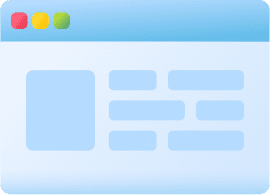Ureteroscopy (URS) is a form of minimally invasive surgery using a small telescope that is passed through the urethra and into the ureter to remove a stone. Often the stone requires fragmentation with a laser which then allows the smaller fragments to removed with a grasping device. Only about 10-15% or urethral stones require surgical intervention. URS is approximately 95% successful in removing stones in the lower ureter and about 85-90% successful in treating and removing stones in the upper ureter and kidney.

This is your website preview.
Currently it only shows your basic business info. Start adding relevant business details such as description, images and products or services to gain your customers attention by using Boost 360 android app / iOS App / web portal.
Treatments
We focus on continuous quality improvement to provide patients a safe environment to recieve highest quality care
Treatments
Transurethral resection of the prostate (TURP) is a surgical procedure that involves cutting away a section of the prostate. The prostate is a small gland in the pelvis only found in men. It's located between the penis and bladder and surrounds the urethra (the tube that carries urine from the bladder to the penis). If the prostate becomes enlarged, it can place pressure on the bladder and urethra. This can cause symptoms such as having difficulty peeing. Why TURP is carried out TURP is often recommended when prostate enlargement causes troublesome symptoms and fails to respond to treatment with medication. Symptoms that may improve after TURP include: problems with starting to pee a weak flow of pee, or stopping and starting having to strain to pee a frequent need to pee waking up frequently during the night to pee a sudden urge to pee being unable to empty your bladder fully How TURP is performed TURP is carried out using a device called a resectoscope, which is a thin metal tube containing a light, camera and loop of wire. This is passed along your urethra until it reaches your prostate, which means no cuts (incisions) need to be made in your skin. The loop of wire is then heated with an electric current and used to cut away the section of your prostate causing your symptoms. A thin tube called a catheter is then inserted into your urethra to pump fluid into the bladder and flush away pieces of the prostate that have been removed. General or spinal anaesthesia is used during the procedure so you don't feel any pain while it's carried out.
Percutaneous Nephrolithotomy (PCNL) Kidney stones are formed in the urinary tract due to the crystallization of chemical compounds in the urine. PCNL is a technique used to remove certain stones in the kidney or upper ureter (the tube that drains urine from the kidney to the bladder) that are too large for other forms of stone treatment such as shock wave lithotripsy or ureteroscopy. The Surgery This procedure has been performed on many patients over the last several years and is an accepted standard of care for patients with kidney stones that are large, very firm, or resistant to other forms of stone treatment. As such it has replaced open operations for kidney stones in the vast majority of patients. Typically, the length of the surgery is one to two hours. The surgery is performed by making a small 1 cm incision in the patient’s flank area. A tube is placed through the incision into the kidney under x-ray guidance with the help of a C-Arm. A small telescope is then passed through the tube in order to visualize the stone, break it up and remove it from the body. If necessary a laser or other device called a lithotripter may be used to break up the stone before it can be removed. This procedure has resulted in significantly less post-operative pain, shorter hospital stays, and an earlier return to work and daily activities when compared to open stone surgery. This technique also has a higher success rate for clearing all stones in one setting than other techniques such as extracorporeal shock wave lithotripsy (ESWL), which often require several attempts. Potential Risks and Complications Although this procedure has proven to be very safe, as in any surgical procedure there are risks and potential complications. The safety and complication rates are similar when compared to open surgery. Potential risks include: Bleeding Infection Tissue / Organ Injury Conversion to open surgery Failure to Remove the Stone
Have any question or need any consultation?
Online appointment booking is not available right now.
Appointment Confirmed
Your appointment ID is
| Doctor Name: | |
| Date & Time: | |
| Contact: | +917420004242 |
| Address: | Opp Vasant Market, Patil Lane, Above Kataria Collection, Old Gangapur Naka to Ramwadi Rd, opp. Dongre Maidan, Canada Corner, Nashik, Maharashtra 422002 |
| Appointment fee: | |
| Payment mode: | |
| Join video call at: |
Thanks for choosing us.Your appointment details has been shared on your mobile number as well. Please arrive atleast 10 minutes ahead of the scheduled time.
Success
